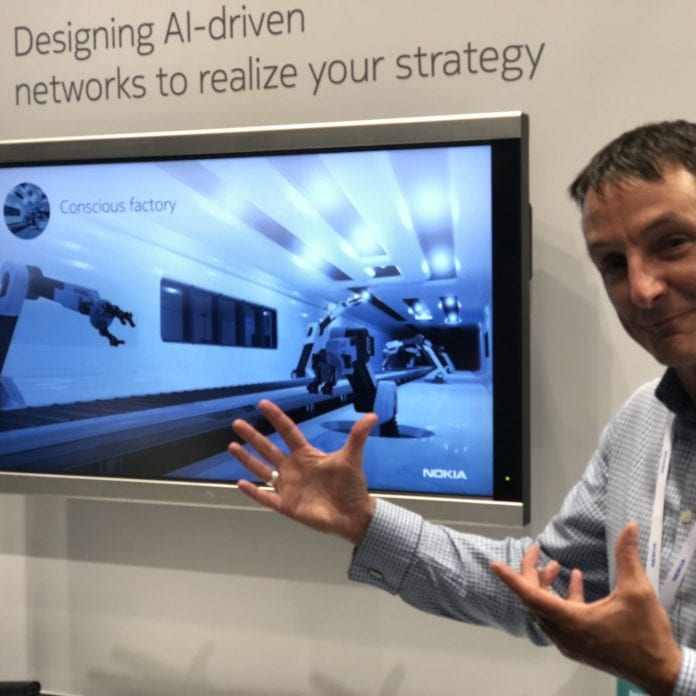Nokia eyeing 2019 for launch of AI-powered 5G Digital Design tool
LONDON—5G is many things, chief among them complex and expensive to deploy. As operators evolve network infrastructure from LTE and, over time, to robust 5G, how do they chart a course that balances capital expenditures with return on investment? Artificial intelligence can play a key role, according to Nokia.
Today at 5G World, ongoing at the ExCel London exhibition complex, the company announced add-ons to its 5G Acceleration Services suite, specifically digital design, cross-domain architecture and site evolution services, which will likely hit the market next year.
Andy Burrell, Nokia’s head of marketing for ultra broadband and analytics services, explained to RCR Wireless News the goal is to create a “detailed blueprint across radio, core and transport to determine how the network needs to evolve to deliver specific use cases whether that’s fixed wireless access or 360-degree VR or whatever the operator is planning on.”
Speaking of the site evolution services, Burrell said: “We look at the physical assets the operators have. All operators have existing legacy networks. They’ve got a lot of investment tied up in those networks. An operator in the U.K. would probably have say 10,000 physical sites. These site evolution services are designed to help the operator evolve those physical sites in a way that makes reuse of those assets as much as possible. Can you reuse the tower, the antennas, can you modernize the site to reduce the footprint required or can you, for example, modernize the power supply. Typically in an operator’s network, energy consumption could be 50% or more of their opex. With telecoms we’ve got all these elephants in the rooms and sometimes they kind of come back into currency, and energy consumption is a classic one.”
Nokia Business Product Lead, 5G, Carl Witjing, walked through a hypothetical of 5G digital design services for an operator looking to provide a manufacturer with the network capabilities needed to operate industrial robotics.
“We would start with the requirements for the use case, so we need to understand what type of solution they want to implement, what kind of equipment they want to use…Then we need to discuss the technical requirements—latency, throughput, capacity, how many devices will be there. From those requirements we will then build our digital model and make a prediction for cost and for performance. With this digital model we can play around. If we want to change the layout of the factor of change some of the other settings, we can assess what is the best configuration for that particular factory. We put those all together and define a solution for the customer.”

